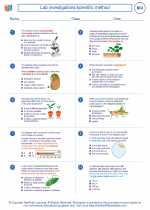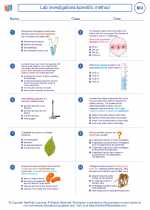Temperature Regulation
Temperature regulation, also known as thermoregulation, is the process by which an organism maintains its internal temperature within a tolerable range. This is crucial for the proper functioning of biological processes, as most enzymes and metabolic pathways are temperature-sensitive and operate optimally within a narrow temperature range.
Key Concepts
- Homeostasis: The maintenance of a stable internal environment despite external fluctuations. In the context of temperature regulation, homeostasis ensures that the body temperature remains relatively constant.
- Thermoreceptors: Specialized sensory receptors that detect changes in temperature and relay this information to the central nervous system.
- Effector Mechanisms: The physiological responses that help adjust the body's temperature, such as sweating, shivering, and vasodilation/constriction of blood vessels.
- Regulatory Centers: Areas of the brain, particularly the hypothalamus, that act as the control center for thermoregulation.
Mechanisms of Temperature Regulation
There are several mechanisms through which the body regulates its temperature:
- Sweating: When the body temperature rises, sweat glands are activated to produce sweat, which evaporates from the skin, dissipating heat and cooling the body.
- Shivering: In response to cold temperatures, muscle contractions generate heat, helping to raise the body temperature.
- Vasodilation and Vasoconstriction: These processes involve the widening or narrowing of blood vessels, respectively, to regulate heat loss or conservation.
- Behavioral Responses: Seeking shade or warmth, adjusting clothing, and seeking shelter are examples of behavioral adaptations to regulate body temperature.
Study Guide
To effectively study temperature regulation, consider the following key points:
- Understand the concept of homeostasis and its relevance to temperature regulation.
- Learn about the role of thermoreceptors in detecting temperature changes and the transmission of this information to the brain.
- Explore the different effector mechanisms involved in temperature regulation, such as sweating and shivering.
- Study the role of the hypothalamus and other regulatory centers in coordinating the body's response to temperature changes.
- Examine how environmental factors, such as heat and cold stress, can impact temperature regulation in organisms.
- Review specific examples of temperature regulation in different organisms, including humans and other animals.
By mastering these concepts and study guide points, you will gain a comprehensive understanding of temperature regulation and its significance in maintaining the balance of living systems.
.◂Biology Worksheets and Study Guides High School. Lab investigations/scientific method
Worksheet/Answer key Lab investigations/scientific method
Lab investigations/scientific method  Worksheet/Answer key
Worksheet/Answer key Lab investigations/scientific method
Lab investigations/scientific method  Worksheet/Answer key
Worksheet/Answer key Lab investigations/scientific method
Lab investigations/scientific method 

 Worksheet/Answer key
Worksheet/Answer key
 Worksheet/Answer key
Worksheet/Answer key

The resources above cover the following skills:
Earth and Space Science (ES)
Earth Processes
Explain how Earth's fluid outer core creates the magnetosphere and how this helps protect both humans and technology (such as satellites) from solar winds.